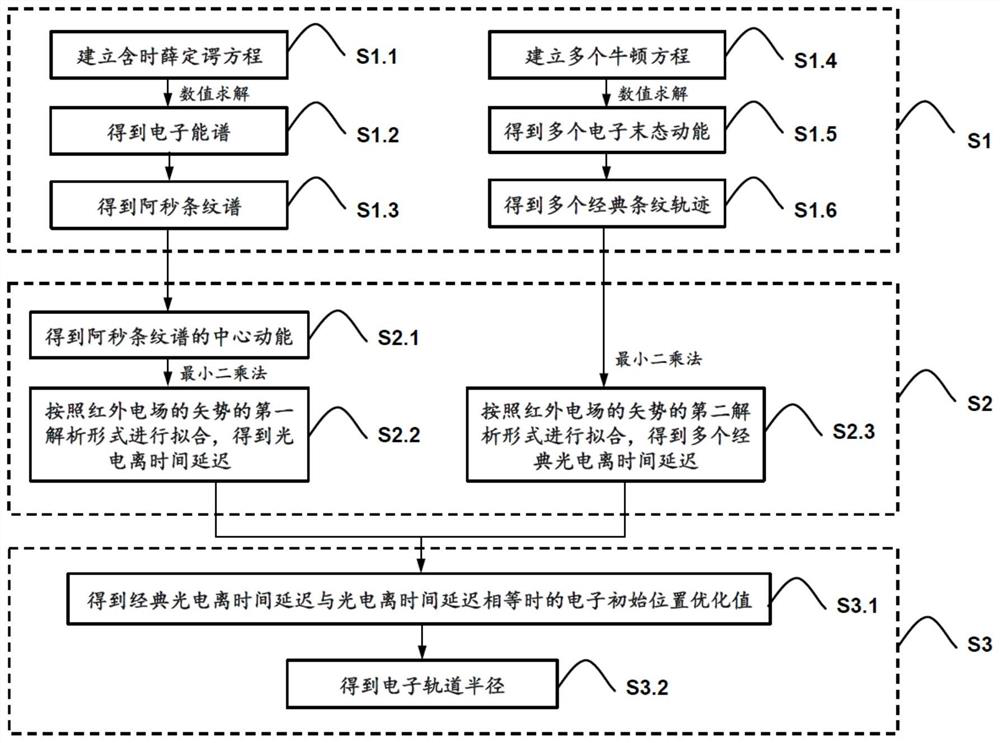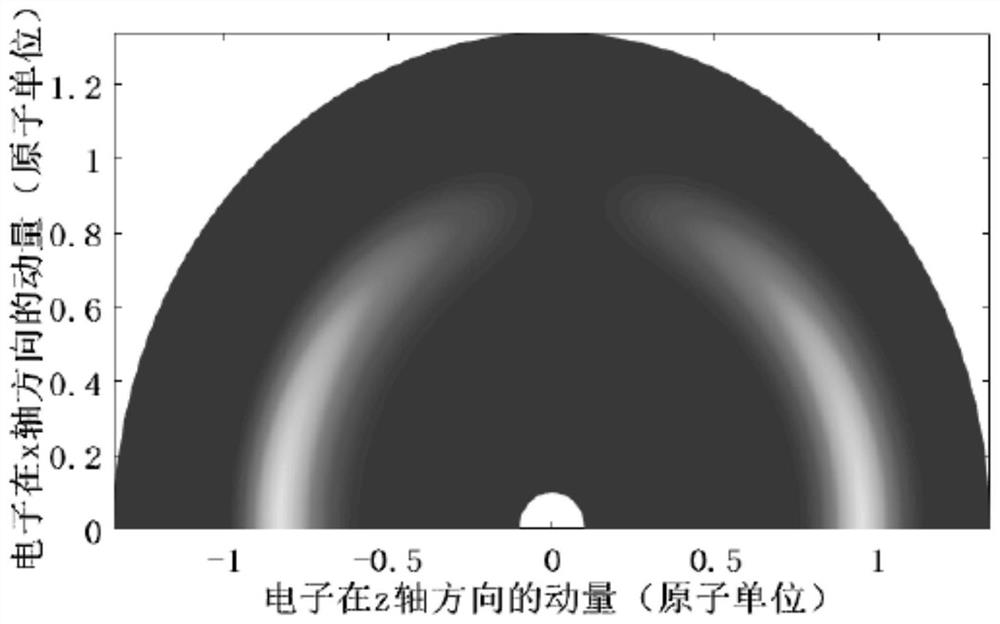Method, system and medium for measuring electron orbital radius based on attosecond fringe spectroscopy
A technology of electronic orbit and radius measurement, applied in radiation measurement, measurement device, particle motion recording and other directions, can solve the problem of photoionization time delay and other problems that have not been reported, and achieve the effect of direct measurement, high precision and simple theory.
- Summary
- Abstract
- Description
- Claims
- Application Information
AI Technical Summary
Problems solved by technology
Method used
Image
Examples
Embodiment 1
[0083] Example one, as figure 1 As shown, a method for measuring electron orbital radius based on attosecond fringe spectrum includes the following steps:
[0084] S1: Acquire the attosecond fringe spectra produced by a plurality of infrared electric fields and a single attosecond pulsed laser acting on the working gas, respectively, and obtain the attosecond fringe spectra generated by the plurality of infrared electric fields, respectively, and a single attosecond pulse under the initial positions of a plurality of electrons a plurality of classical fringe trajectories generated by the combined action of the pulsed laser on the working gas;
[0085]S2: obtaining the photoionization time delay of the working gas according to the attosecond fringe spectrum, and obtaining a plurality of classical photoionization time delays corresponding to the working gas according to a plurality of the classical fringe trajectories;
[0086] S3: Obtain the electron orbital radius correspondi...
Embodiment 2
[0135] Embodiment two, as figure 1 As shown, a method for measuring electron orbital radius based on attosecond fringe spectrum includes the following steps:
[0136] S1: Acquire the attosecond fringe spectra produced by a plurality of infrared electric fields and a single attosecond pulsed laser acting on the working gas, respectively, and obtain the attosecond fringe spectra generated by the plurality of infrared electric fields, respectively, and a single attosecond pulse under the initial positions of a plurality of electrons a plurality of classical fringe trajectories generated by the combined action of the pulsed laser on the working gas;
[0137] S2: obtaining the photoionization time delay corresponding to the working gas according to the attosecond fringe spectrum, and obtaining a plurality of classical photoionization time delays corresponding to the working gas according to a plurality of the classical fringe trajectories;
[0138] S3: Obtain the electron orbital ...
Embodiment 3
[0140] Embodiment three, as Figure 9 As shown, an electronic orbital radius measurement system based on attosecond fringe spectrum includes an energy spectrum acquisition module, a time delay fitting module and an orbital radius determination module;
[0141] The fringe spectrum acquisition module is used to acquire the attosecond fringe spectra generated by the combined action of a plurality of infrared electric fields and a single attosecond pulsed laser on the working gas, and is also used to acquire a plurality of the initial positions of the electrons. A plurality of classical fringe trajectories generated on the working gas by the combined action of the infrared electric field and the single attosecond pulsed laser respectively;
[0142] The time delay extraction module is configured to obtain the photoionization time delay of the working gas according to the attosecond fringe spectrum, and is also configured to obtain a plurality of classical photoionizations correspon...
PUM
 Login to View More
Login to View More Abstract
Description
Claims
Application Information
 Login to View More
Login to View More - R&D
- Intellectual Property
- Life Sciences
- Materials
- Tech Scout
- Unparalleled Data Quality
- Higher Quality Content
- 60% Fewer Hallucinations
Browse by: Latest US Patents, China's latest patents, Technical Efficacy Thesaurus, Application Domain, Technology Topic, Popular Technical Reports.
© 2025 PatSnap. All rights reserved.Legal|Privacy policy|Modern Slavery Act Transparency Statement|Sitemap|About US| Contact US: help@patsnap.com



